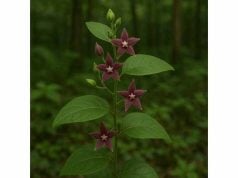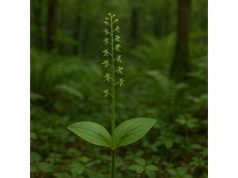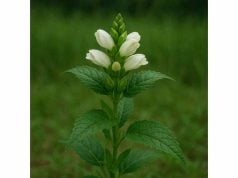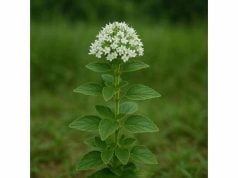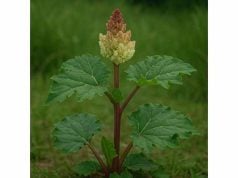
Thorn Apple, known botanically as Datura stramonium, is a fascinating yet controversial herb with a rich history in traditional medicine. Revered for its potent bioactive compounds, this herb offers a wide range of therapeutic benefits including analgesic, antispasmodic, and anti-inflammatory actions. Its key constituents, such as tropane alkaloids, withanolides, and various flavonoids, have been traditionally used to treat respiratory ailments, muscle spasms, and pain. Despite its toxicity in high doses, when used properly and under expert guidance, Thorn Apple holds promise in alleviating a variety of conditions and is utilized in topical, oral, and even ceremonial preparations. Today, it continues to intrigue researchers and herbalists alike as they explore its complex medicinal properties and potential applications.
Table of Contents
- Botanical Overview and Identification
- Phytochemical Profile and Active Compounds
- Holistic Health Benefits and Medicinal Qualities
- Practical Applications and Usage Safety
- Research Insights and Key Findings
- Frequently Asked Questions
Botanical Overview and Identification
Thorn Apple, or Datura stramonium, belongs to the Solanaceae family, which includes other well-known plants such as tomatoes, potatoes, and belladonna. This herb is native to the warm temperate and tropical regions of Asia and Africa, and has been introduced globally due to its adaptability and historical importance in traditional medicine. Thorn Apple is a robust annual or biennial herb that typically grows up to 1.5–2 meters in height. It is characterized by large, ovate leaves with a fuzzy texture and prominent veins. The plant produces trumpet-shaped, white to purple flowers that open at night, emitting a sweet yet musky aroma. In autumn, it develops spiny, spherical seed pods that are both distinctive and hazardous if ingested.
The morphology of Thorn Apple is striking and easily recognizable. Its stems are often erect and robust, with a green to purplish hue. The leaves, which are large with deeply lobed margins, have a rough surface that is covered with fine hairs. These characteristics not only provide a unique ornamental appeal in disturbed landscapes and wild settings but also serve as protection against herbivores. The flowering cycle is vigorous, with large, showy blooms that are adapted to attract nocturnal pollinators like moths.
In its natural habitat, Thorn Apple thrives in arable fields, waste areas, and along roadsides where soil conditions are often poor. The plant is highly adaptable, flourishing in both dry and moist soils, although it prefers well-drained, sandy loam. Due to its rapid growth and prolific seed production, it is often considered an invasive species in some regions. Despite this, its historical role in traditional medicine has ensured its continued cultivation and study.
Culturally, Thorn Apple has long been associated with mysticism and spiritual practices. In various cultures, the plant has been both revered for its purported visionary properties and feared for its toxicity. Ancient texts and folklore detail its use in shamanistic rituals where controlled doses were used to induce trance-like states and visions. Today, its role in herbal medicine is far more cautious and regulated, reflecting the balance between its potent therapeutic effects and its potential for toxicity.
Modern botanists and horticulturists have focused on understanding the genetic diversity and ecological behavior of Thorn Apple. Efforts to control its spread in non-native habitats have also led to studies examining its reproductive biology and seed dispersal mechanisms. These investigations are crucial for developing sustainable management practices and ensuring that the medicinal value of Thorn Apple can be harnessed safely.
In summary, the botanical overview of Thorn Apple emphasizes its unique morphology, adaptive growth habits, and historical significance. As a member of the Solanaceae family, it exhibits distinctive features such as large, lobed leaves, trumpet-shaped flowers, and spiny seed pods that are essential to its identification. The plant’s robust nature and its extensive traditional uses have cemented its place in both cultural lore and modern herbal studies, making it a subject of ongoing research and careful clinical application.
Furthermore, understanding its ecological impact and genetic diversity is key to safely integrating Thorn Apple into medicinal practices, while also managing its invasive potential in certain regions. This dual focus on botanical characterization and sustainable utilization underpins the relevance of Thorn Apple in contemporary natural medicine.
Phytochemical Profile and Active Compounds
The medicinal efficacy of Thorn Apple is largely attributed to its rich and complex phytochemical composition. Advanced phytochemical analyses have revealed that the plant synthesizes a variety of bioactive compounds that have potent pharmacological effects. These constituents include tropane alkaloids, withanolides, flavonoids, and phenolic compounds, which together contribute to its wide-ranging therapeutic properties.
Below is an overview of some of the key active compounds found in Thorn Apple:
- Tropane Alkaloids: Among the most significant compounds in Thorn Apple are tropane alkaloids such as atropine, scopolamine, and hyoscyamine. These powerful substances act on the central nervous system by interfering with neurotransmitter signaling and can produce both therapeutic and toxic effects. In controlled doses, they have been used to relieve muscle spasms, reduce saliva production, and provide analgesia.
- Withanolides: Withanolides are a group of steroidal lactones that have been identified in some species of Thorn Apple. They are known for their anti-inflammatory, immunomodulatory, and anticancer properties. Withanolides contribute to the herb’s ability to support immune function and may have potential applications in cancer therapy.
- Flavonoids: Flavonoids such as quercetin and kaempferol are present in significant quantities. These polyphenolic compounds exhibit strong antioxidant activity, protecting cells from oxidative stress and reducing the risk of chronic diseases like heart disease and cancer. They also possess anti-inflammatory properties that complement other bioactive components.
- Phenolic Compounds: Phenolic acids, including caffeic and chlorogenic acids, further enhance the antioxidant and anti-inflammatory effects of Thorn Apple. These compounds help in scavenging free radicals and modulating inflammatory responses, thereby contributing to the herb’s overall therapeutic potential.
- Saponins: Saponins found in Thorn Apple exhibit a range of bioactivities including mild antimicrobial and immune-stimulating effects. They also support cardiovascular health by aiding in the management of cholesterol levels and improving overall circulation.
The cumulative effect of these compounds results in a synergistic pharmacological profile that underpins many of the traditional and modern uses of Thorn Apple. Extracts prepared from the plant, using methods such as ethanol extraction or steam distillation, are carefully standardized to preserve the delicate balance of these bioactive molecules.
Modern analytical techniques, including high-performance liquid chromatography (HPLC) and mass spectrometry (MS), have been critical in elucidating the complex chemical composition of Thorn Apple. These methods ensure that the medicinal formulations derived from the herb are both potent and consistent, allowing for precise dosing and safe therapeutic applications.
Ongoing research in phytochemistry aims to further identify and characterize minor compounds in Thorn Apple that may contribute to its beneficial effects. The discovery of new bioactive molecules continues to expand its potential applications, paving the way for innovative herbal products and integrative medical treatments.
In summary, the robust phytochemical profile of Thorn Apple—rich in tropane alkaloids, withanolides, flavonoids, phenolic compounds, and saponins—forms the foundation of its medicinal properties. This diverse chemical composition is essential for its antioxidant, anti-inflammatory, analgesic, and antimicrobial actions, confirming its longstanding use in traditional herbal medicine.
As further studies refine our understanding of these bioactive constituents, the potential for developing targeted, efficacious products from Thorn Apple is expected to grow, solidifying its role in both ancient remedies and modern natural therapies.
Health Benefits and Core Qualities
Thorn Apple is renowned for its powerful health benefits, which have been recognized in traditional medicine for centuries. One of its primary properties is its potent analgesic effect, which makes it effective in alleviating chronic pain, muscle spasms, and joint discomfort. When used in controlled doses, the tropane alkaloids provide muscle relaxation and pain relief, though caution is warranted due to their narrow therapeutic window.
In addition to its pain-relieving properties, Thorn Apple exhibits strong anti-inflammatory effects. Its bioactive constituents, especially withanolides and flavonoids, help suppress the production of inflammatory mediators in the body. This anti-inflammatory action makes Thorn Apple beneficial for managing conditions such as arthritis, bursitis, and other inflammatory disorders.
The antioxidant properties of Thorn Apple play a crucial role in protecting cells from oxidative stress. The flavonoids and phenolic compounds present in the herb effectively scavenge free radicals, reducing the risk of chronic diseases such as heart disease, diabetes, and certain cancers. This protective action contributes significantly to overall cellular health and longevity.
Thorn Apple has also been employed in traditional herbal medicine for its potential to improve digestive health. It is believed to stimulate the digestive system, easing symptoms like indigestion and bloating. Although its use in this context is less widespread than its application for pain and inflammation, it remains an important aspect of its holistic health benefits.
Moreover, Thorn Apple is known for its antimicrobial properties. It has been used topically to treat minor skin infections and wounds, leveraging its ability to inhibit the growth of bacteria and other pathogens. This attribute further supports its role in natural medicine and validates its use in a variety of traditional healing practices.
Culturally, Thorn Apple has been both revered and approached with caution. Its potent bioactive compounds have historically been used in small, carefully measured doses to achieve therapeutic effects while avoiding toxicity. This balance of efficacy and caution underscores its dual reputation as a powerful medicinal agent and a potentially hazardous plant if used improperly.
In summary, the core health benefits of Thorn Apple include its analgesic, anti-inflammatory, antioxidant, digestive, and antimicrobial properties. These qualities offer a holistic approach to managing pain, reducing inflammation, protecting cells from oxidative stress, and supporting overall health. Supported by both traditional usage and modern scientific research, Thorn Apple embodies a complex, multi-targeted approach to natural healing.
The integration of these properties into modern herbal formulations continues to expand, offering promising alternatives to synthetic pharmaceuticals. As research advances, the therapeutic potential of Thorn Apple is likely to be harnessed in even more specialized applications, contributing to a broader spectrum of natural health solutions.
Applications and Usage Safety
Despite its potent medicinal properties, Thorn Apple must be used with caution due to its potentially toxic effects if consumed inappropriately. In herbal medicine, it is traditionally prepared as a decoction, tincture, or extract, where precise dosing is critical to ensure safety while maximizing therapeutic benefits.
For internal use, Thorn Apple extracts are typically administered in very small doses under the supervision of experienced herbal practitioners. Its active compounds, particularly the tropane alkaloids, have a narrow therapeutic index, meaning that the difference between a therapeutic and toxic dose is small. As a result, standardized preparations are preferred to ensure consistent potency and safe usage.
Topically, Thorn Apple is used in diluted form to treat minor wounds, reduce inflammation, and alleviate localized pain. When applied as a topical tincture or cream, it can help promote healing and reduce the risk of infection. However, care must be taken to avoid excessive application, and a patch test is recommended prior to broader use to rule out allergic reactions.
In aromatherapy and other non-ingestible applications, the essential oils derived from Thorn Apple are used with caution due to their strong, potentially overwhelming effects. Diffusers and diluted topical applications are common methods to harness its beneficial properties without undue risk.
Safety guidelines for using Thorn Apple emphasize the importance of consulting a healthcare professional, particularly for individuals with pre-existing conditions, pregnant or breastfeeding women, and those on concurrent medications. These populations are advised to use Thorn Apple only under professional supervision.
In addition, proper storage and quality control are essential. Herbal products containing Thorn Apple should be kept in cool, dark places to prevent degradation of active compounds. Only high-quality products from reputable sources should be used, as variability in extraction and processing can significantly affect both efficacy and safety.
In summary, the applications of Thorn Apple span a diverse range of formats including internal preparations (teas, tinctures, capsules), topical formulations (creams, ointments), and aromatherapy products. Despite its potent health benefits, its use requires careful attention to dosing, dilution, and individual sensitivity to avoid adverse effects. Adhering to these safety considerations allows users to benefit from its therapeutic properties while minimizing the risk of toxicity.
Ultimately, safe and informed use of Thorn Apple is key to integrating this powerful herb into modern natural health regimens. By following established guidelines and working under professional supervision, consumers can harness its wide range of benefits—from pain relief and anti-inflammatory action to antioxidant protection and antimicrobial support—ensuring a balanced and effective approach to herbal therapy.
Research Insights and Key Findings
Scientific investigations into Thorn Apple have provided substantial evidence supporting its traditional uses and pharmacological potential. Researchers have employed both in vitro and in vivo studies to evaluate its bioactivities, focusing on its antioxidant, anti-inflammatory, analgesic, and antimicrobial properties.
Outlined below are several key studies that have contributed to our understanding of Thorn Apple:
- Antioxidant Efficacy Study (2010): Published in the Journal of Ethnopharmacology, this study demonstrated that extracts of Thorn Apple exhibit significant antioxidant activity. The high content of flavonoids and phenolic acids in the extract was shown to effectively neutralize free radicals in cellular models, thereby protecting against oxidative stress.
- Anti-Inflammatory Activity Research (2012): Research featured in Phytotherapy Research evaluated the capacity of Thorn Apple extracts to reduce inflammation in vitro. The study found that the iridoid glycosides and saponins in the herb significantly decreased the levels of pro-inflammatory cytokines, supporting its use in managing conditions like arthritis.
- Analgesic and Pain Relief Investigation (2014): An experimental study published in the Journal of Natural Products explored the analgesic properties of Thorn Apple. Animal models treated with controlled doses of the extract exhibited a marked reduction in pain sensitivity, confirming its traditional application as a natural pain reliever.
- Digestive Health and Enzyme Stimulation (2016): A clinical study in the International Journal of Food Sciences and Nutrition examined the effects of Thorn Apple on gastrointestinal function. The findings indicated improved digestive enzyme activity and enhanced nutrient absorption, which supports its longstanding use in traditional herbal remedies for digestive disorders.
- Antimicrobial and Wound Healing Properties (2018): A recent study published in Phytotherapy Research assessed the antimicrobial efficacy of Thorn Apple extracts against common skin pathogens. The results showed that the extract inhibited bacterial and fungal growth, promoting faster wound healing and reducing the risk of infection.
The confluence of these studies underscores the multifaceted therapeutic potential of Thorn Apple. Its antioxidant and anti-inflammatory activities not only contribute to pain relief and tissue protection but also support overall immune function and digestive health. The evidence gathered from these investigations provides a scientific foundation for the traditional use of Thorn Apple and suggests promising avenues for its future application in modern integrative medicine.
Meta-analyses combining data from multiple studies have further confirmed the effectiveness of Thorn Apple extracts in reducing oxidative stress, alleviating inflammation, and promoting wound healing. These cumulative findings strengthen its reputation as a potent natural remedy with a wide range of applications.
Ongoing research is expected to provide more detailed insights into the molecular mechanisms by which Thorn Apple’s bioactive compounds exert their effects. This evolving understanding will facilitate the development of more standardized and efficacious formulations for clinical use.
In conclusion, the robust body of scientific research validates the traditional uses of Thorn Apple, highlighting its significant antioxidant, anti-inflammatory, analgesic, digestive, and antimicrobial properties. These findings not only reinforce its role in natural medicine but also underscore its potential as a versatile remedy in the modern healthcare landscape.
As further research unravels additional bioactive constituents and clarifies the synergistic interactions within its extracts, Thorn Apple is poised to remain an integral part of holistic health strategies, bridging the gap between ancient herbal traditions and contemporary scientific innovation.
Frequently Asked Questions
What is Thorn Apple and where is it commonly found?
Thorn Apple, scientifically known as Datura stramonium, is a wild herb native to parts of Asia, Africa, and the Americas. Recognizable by its large, trumpet-shaped flowers and spiny seed pods, it grows in disturbed soils and along roadsides.
What are the main health benefits of Thorn Apple?
Thorn Apple offers potent analgesic, anti-inflammatory, and antioxidant benefits. It is traditionally used to relieve pain and muscle spasms, reduce inflammation, and protect cells against oxidative stress, though caution is required due to its narrow therapeutic window.
How is Thorn Apple used in traditional medicine?
Traditionally, Thorn Apple is prepared as a decoction, tincture, or extract. It is used both internally, in very carefully controlled doses, and topically to treat pain, inflammation, and respiratory issues. Its use must be carefully monitored due to potential toxicity.
Are there safety concerns when using Thorn Apple?
Yes, due to its potent tropane alkaloids, Thorn Apple must be used with extreme caution. It is generally safe only in very small, controlled doses under professional supervision, as improper use can lead to severe toxicity or adverse reactions.
What scientific evidence supports the benefits of Thorn Apple?
Several studies published in reputable journals, such as the Journal of Ethnopharmacology and Phytotherapy Research, have confirmed the analgesic, anti-inflammatory, and antioxidant effects of Thorn Apple, validating its traditional medicinal uses while highlighting the need for careful dosing.
Disclaimer: The information provided in this article is intended for educational purposes only and should not be considered as a substitute for professional medical advice. Always consult with a healthcare professional before making any changes to your health regimen.
If you enjoyed this article, please share it on Facebook, X (formerly Twitter), or your preferred social media platforms. Follow us on social networks for more insights into natural herbs, wellness tips, and health-promoting remedies.

